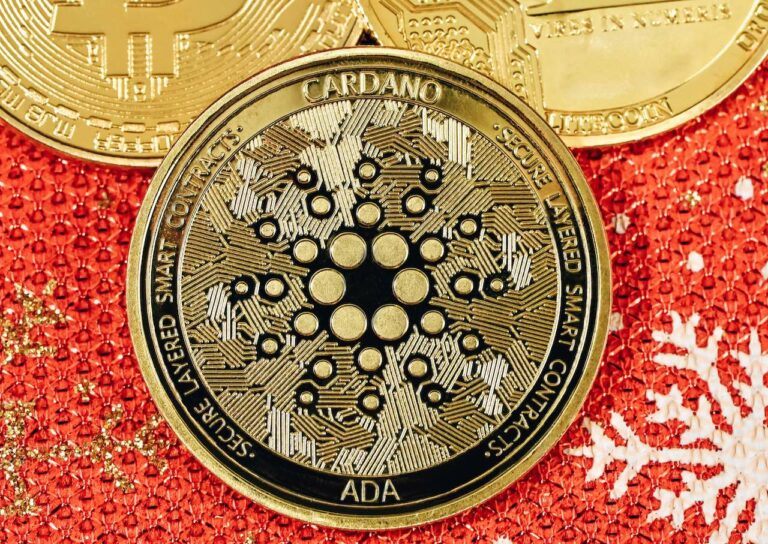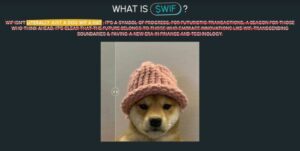
Recently, in a comprehensive thread on social media platform X, ADA Whale, a prominent Cardano ecosystem analyst, outlined the reasons why institutional and traditional finance (TradFi) investors should consider exposure to Cardano ($ADA).
1. Institutional Interest in Crypto
ADA Whale began by noting that more institutional and TradFi money is expected to flow into crypto soon. He suggested that this makes it an opportune time for these entities to explore investment in Cardano, given its unique position in the crypto space compared to major cryptocurrencies and VC-backed coins.
2. Cardano’s Academic Foundation
According to ADA Whale, Cardano stands out due to its academic and open-source nature, likening it to the Linux of crypto. He highlighted its stable, secure, and lightweight network capable of supporting a decentralized world, with a remarkable uptime of six years.
3. Core Philosophy and Decentralization
ADA Whale emphasized Cardano’s underlying principles, such as the blockchain trilemma and inclusive accountability. He pointed out that the standard wallet is an open-source full node, which is permissionless and trustless. The ledger size is significantly smaller than other chains, promoting better decentralization.
4. Cardano’s Consensus Protocol
Cardano’s Proof-of-Stake protocol, Ouroboros, uses an extended Unspent Transaction Output (UTxO) model and Nakamoto consensus. ADA Whale described it as a programmable PoS version of Bitcoin, advantageous for security and scalability.
5. Dynamic Availability with Ouroboros Genesis
ADA Whale noted that the upcoming Ouroboros Genesis upgrade positions Cardano as one of the few PoS protocols with dynamic availability. This feature enables bootstrapping from genesis, enhancing stability and reducing trust assumptions.
6. Monetary Policy
Cardano’s ADA has a disinflationary policy with a max supply of 45 billion, of which 35 billion is circulating. ADA Whale explained that block rewards gradually reduce, making ADA increasingly scarce.
7. Distribution of ADA
He pointed out that the majority of ADA was distributed to Asian investors between 2015 and 2017, with a minor portion to founding entities. Subsequent market cycles have further diversified the holder base.
8. Treasury System
Cardano has a significant treasury, funded by reserves and fees, which is being put under community control. ADA Whale sees this as a mechanism for self-funding, future development, and economic sustainability.
9. Transactional Efficiencies
Cardano’s approach to handling tokens and NFTs as native assets allows for efficient bulk transactions, which ADA Whale contrasted with other chains’ less efficient methods.
10. Staking Mechanism
He highlighted Cardano’s unique non-custodial, fully decentralized staking mechanism. Staked coins remain liquid and under the owner’s control, even when used in DeFi.
11. Decentralization Metrics
ADA Whale emphasized Cardano’s strong decentralization metrics, backed by a visible community. The minimum attack vector metric, in particular, stands out compared to other chains.
Scaling Capabilities
While acknowledging the crypto industry’s focus on scaling, ADA Whale argued that Cardano is positioned to scale through various means, despite solving fundamental issues not yet addressed by others.
<!–
–> <!–
–>
13. Initial Stake Pool Offering (ISPO)
Cardano’s design led to the ISPO, a decentralized funding mechanism. Projects can set up pools, stake ADA, and distribute a share of their tokens to contributors.
14. Partner Chains
ADA Whale discussed forthcoming innovations positioning Cardano similarly to Cosmos. He mentioned the concept of ‘Decentralisation as a Service,’ where ADA holders benefit from interoperability and economic sustainability.
15. DeFi Innovations
He cited several DeFi innovations on Cardano, including undercollateralized staking bonds, natively staked LPs, and programmable swaps.
16. Security Features
ADA Whale acknowledged the commonality of hacks in crypto but pointed out that Cardano’s eUTxO model and functional programming language for smart contracts enhance security.
17. Developer Experience
He noted that early concerns about coding in Haskell have been mitigated by new Domain-Specific Languages (DSLs) that are increasingly utilized in the Cardano ecosystem.
18. Marlowe for Smart Contracts
Marlowe, a tool on Cardano, allows for the creation of smart contracts in various languages, including JavaScript and Haskell, which ADA Whale sees as a potential game-changer for financial contracts.
19. Governance
ADA Whale predicts 2024 as the year for governance in Cardano, allowing every ADA holder to participate in the decision-making process. This step toward decentralized governance is seen as both challenging and exhilarating, positioning Cardano as one of the few major Layer 1 blockchains with true governance and decentralization.
20. Mithril Protocol
Mithril, a stake-based threshold multi-signature protocol on Cardano, is highlighted for its versatility. ADA Whale sees its potential use in quicker bootstrapping of full nodes as the ledger grows, and providing full node security for non-full node wallets.
21. Native Token Market
The analyst points to the burgeoning ecosystem of projects building on Cardano, spanning various sectors like DeFi, entertainment, telecommunications, oracles, gaming, and privacy. He expects the prominence of this market to rise, achieving a status comparable to ERC20.
22. Wallet Ecosystem
ADA Whale praises the variety of wallet options available for Cardano users. From Daedalus, the standard open-source full node wallet, to a range of mobile and desktop wallets like Yoroi, Eternl, GeroWallet, and more, offering top-quality experiences.
23. DApps on Cardano
He mentions specific decentralized applications (DApps) within the Cardano ecosystem, including Book.io, DexHunter.io, Iagon (decentralized storage), OptimFi (staking bonds), and AxoTrade, expected to be a top crypto trading platform.
24. Tools and Analytics
ADA Whale notes the improvement in tools and analytics for the Cardano ecosystem, citing examples like Demeter (for building and deploying DApps on a single platform), GoMaestro (offering APIs, price data, transaction management), TapTools (native token market data), and CryptoTrack (native token markets).
Featured Image via Unsplash
- SEO Powered Content & PR Distribution. Get Amplified Today.
- PlatoData.Network Vertical Generative Ai. Empower Yourself. Access Here.
- PlatoAiStream. Web3 Intelligence. Knowledge Amplified. Access Here.
- PlatoESG. Carbon, CleanTech, Energy, Environment, Solar, Waste Management. Access Here.
- PlatoHealth. Biotech and Clinical Trials Intelligence. Access Here.
- Source: https://www.cryptoglobe.com/latest/2024/01/ada-whale-explains-cardanos-ada-potential-attraction-for-institutional-and-tradfi-investment-funds/
- :has
- :is
- :not
- :where
- $UP
- 1
- 10
- 13
- 2015
- 2017
- 2024
- 35%
- 8
- a
- About
- academic
- accountability
- achieving
- acknowledged
- Ad
- ADA
- addressed
- Ads
- advantageous
- All
- Allowing
- allows
- an
- analyst
- analytics
- and
- APIs
- applications
- Applications (DApps)
- approach
- ARE
- argued
- AS
- asian
- Assets
- assumptions
- attack
- availability
- available
- backed
- base
- BE
- been
- began
- being
- benefit
- Bet
- Better
- between
- Billion
- Bitcoin
- Block
- block rewards
- blockchain
- blockchains
- Bonds
- book
- both
- Bound
- Building
- burgeoning
- but
- by
- CAN
- capable
- Cardano
- chains
- challenging
- circulating
- cited
- Coding
- Coin
- Coins
- community
- comparable
- compared
- comprehensive
- concept
- Concerns
- Consensus
- Consider
- contracts
- contributors
- control
- Core
- Cosmos
- creation
- crypto
- crypto space
- crypto trading
- crypto trading platform
- cryptocurrencies
- CryptoGlobe
- cycles
- Daedalus
- DApps
- data
- Decentralization
- decentralized
- Decentralized Applications
- decentralized governance
- Decision Making
- DeFi
- deploying
- described
- Design
- desktop
- Despite
- Developer
- Development
- discussed
- distribute
- distributed
- distribution
- diversified
- does
- due
- dynamic
- Early
- Economic
- ecosystem
- efficient
- emphasized
- enables
- enhance
- enhancing
- Entertainment
- entities
- ERC20
- Even
- Every
- examples
- exhilarating
- expected
- expects
- Experiences
- explained
- Explains
- explore
- Exposure
- extended
- Feature
- Fees
- few
- finance
- financial
- Find
- firms
- fit
- flow
- Focus
- For
- forthcoming
- founding
- from
- full
- Full node
- fully
- functional
- fundamental
- funded
- funding
- further
- future
- game-changer
- gaming
- Genesis
- given
- good
- governance
- gradually
- Grows
- hacks
- Handling
- Have
- he
- Highlighted
- holder
- holders
- HTTPS
- idea
- image
- improvement
- in
- Including
- Inclusive
- increasingly
- industry’s
- initial
- innovations
- Institutional
- Institutional Interest
- institutions
- interest
- Interoperability
- into
- investment
- Investors
- issues
- IT
- ITS
- JavaScript
- jpg
- language
- Languages
- layer
- layer 1
- Led
- Ledger
- less
- lightweight
- like
- linux
- Liquid
- LPs
- major
- Majority
- Majors
- MAKES
- Making
- management
- Mantra
- Market
- Market Data
- Markets
- max
- means
- mechanism
- Media
- mentioned
- mentions
- methods
- metric
- Metrics
- might
- minimum
- minor
- Mobile
- model
- Monetary
- money
- more
- nakamoto
- native
- Native Token
- Nature
- network
- New
- NFTs
- node
- nodes
- non-custodial
- noted
- Notes
- noting
- of
- offering
- on
- ONE
- open source
- opportune
- Options
- Oracles
- Other
- Others
- out
- outlined
- output
- participate
- particular
- partner
- permissionless
- philosophy
- Place
- platform
- plato
- Plato Data Intelligence
- PlatoData
- points
- policy
- pool
- Pools
- portion
- PoS
- position
- positioned
- positioning
- positions
- potential
- Predicts
- price
- principles
- privacy
- process
- programmable
- Programming
- projects
- projects building
- prominence
- prominent
- promoting
- Proof-of-Stake
- protocol
- protocols
- providing
- put
- quicker
- range
- reasons
- recap
- reduce
- reducing
- remain
- remarkable
- repeated
- reserves
- Rewards
- Rise
- Scalability
- Scale
- scaling
- Scarce
- Screen
- screens
- Sectors
- secure
- security
- seen
- sees
- service
- set
- several
- Share
- should
- significant
- significantly
- Similarly
- single
- SIX
- Size
- sizes
- smaller
- smart
- Smart Contracts
- Social
- social media
- Solving
- soon
- Space
- spanning
- specific
- Stability
- stable
- stake
- Stake ADA
- Staked
- Staking
- standard
- stands
- Status
- Step
- storage
- strong
- subsequent
- such
- supply
- Supporting
- Sustainability
- Swaps
- telecommunications
- than
- that
- The
- their
- Them
- These
- this
- threshold
- Through
- time
- to
- token
- Tokens
- tool
- tools
- top
- toward
- TradFi
- Trading
- Trading Platform
- traditional
- traditional finance
- transaction
- transactional
- Transactions
- treasury
- true
- Trust
- trustless
- under
- underlying
- unique
- upcoming
- upgrade
- uptime
- use
- used
- users
- uses
- utilized
- variety
- various
- VC
- versatility
- version
- via
- visible
- Wallet
- Wallets
- want
- was
- Way..
- Whale
- when
- which
- why
- with
- within
- world
- worthwhile
- X
- year
- years
- yet
- Yoroi
- zephyrnet













